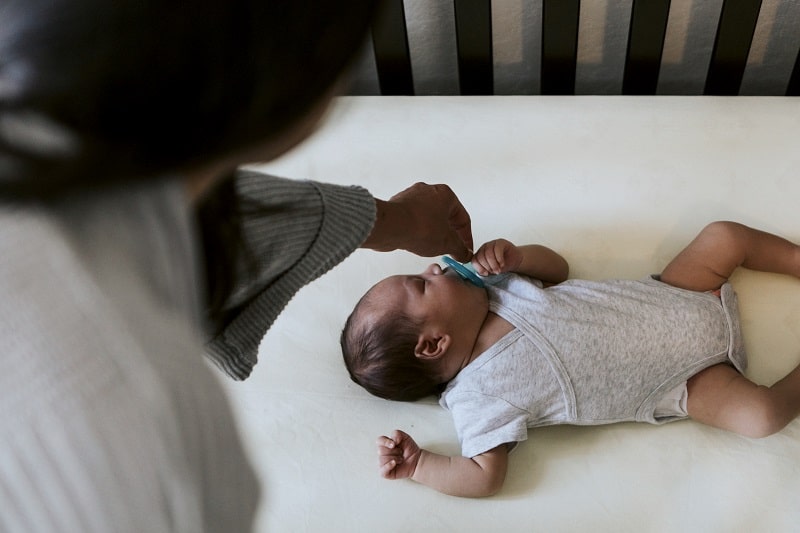Traditionally and worldwide, when a woman gives birth, parents, friends, workmates and well-wishers all rush to either pay her a visit or congratulate her upon the newborn through messages, calls and more. As a young Midwife and Women’s Health Specialist, during such visits, I have often noted that the newborn is either put to sleep on their back, or on their side and sometimes, the baby is put to sleep on their front/tummy especially after the cord has fallen off.
Sometimes, I become inquisitive and inquire why a newborn is put to sleep on their front/tummy for those found and various reasons have been given such as “it calms down the baby, sleeping on the tummy makes the baby fall asleep first, it reduces colic pain, Jjaja or mum advised me to put the baby in that position etc”. I have often further tried to engage some of these women and even shared about the dangers of putting their babies to sleep on their tummies/front, but I have often faced resistance from some due to the earlier given reasons and more.
Naturally, it feels good having a baby and indeed families consider having a baby as a beautiful miracle. Protecting babies is the collective responsibility of parents, health care professionals and the community at large. Unfortunately, some babies do not live up to their first birthday due to various reasons. Some of the babies die from a phenomenon called “sudden infant death syndrome” also known as SIDS.
Sudden Infant death refers to the sudden unexpected death of an infant below one year of age with onset of the fatal episode apparently occurring during sleep, that remains unexplained after a thorough investigation, including performance of a complete autopsy and review of the circumstances of death and clinical history.
Sudden Infant Death Syndrome has been linked to poor sleeping positions in babies, especially newborns. Evidence shows that tummy/front/prone and side sleep positions have been considered as external stressors for infants, which may alter the autonomic control of the infant’s cardiovascular system, particularly at 2 to 3 months of age, and may result in decreased cerebral oxygenation. Tummy/front position was also shown to decrease cardiac output, mean arterial pressure, oxygen saturation, minute ventilation, and arousal responses to various stimuli.
Worldwide, the recommended and best sleeping position for your baby below one year is “Back to sleep”, meaning always put your baby on their back for every sleep, day and night. Available evidence shows that the chance of SIDS is particularly high for babies who are sometimes placed on their front/tummy or side.
Conclusively, I, therefore, recommend the following steps to be taken to always to safely sleep the baby below one year
Do you have a story or an opinion to share? Email us on: dailyexpressug@gmail.com Or follow the Daily Express on X Platform or WhatsApp for the latest updates.
- Place your baby to sleep on his/her back rather than on the tummy or side. This isn’t necessary when your baby’s awake or able to roll over both ways without help. However, don’t assume that others will place your baby to sleep in the correct position but insist on it. Advise sitters and child-care providers not to use thefront/tummy position to calm an upset baby.
- Keep the baby’s crib as bare as possible. Use a firm mattress and avoid placing your baby on thick, fluffy padding. Don’t leave pillows, fluffy toys or stuffed animals in the crib. These can interfere with breathing if your baby’s face presses against them.
- Don’t overheat your baby. To keep your baby warm, try a sleep sack or other sleep clothing that doesn’t require additional covers. Don’t cover your baby’s head.
- Have your baby sleep in in your room. Ideally, your baby should sleep in your room with you, but alone in a crib designed for infant sleep, for at least six months, and, if possible, up to a year. We should note that adult beds aren’t safe for infants because the baby can become trapped and suffocate between the headboard slats, the space between the mattress and the bed frame, or the space between the mattress and the wall or the baby can also suffocate if a sleeping parent accidentally rolls over and covers the baby’s nose and mouth.
- Breast-feed your baby, if possible. Breast-feeding for at least six months lowers the risk of SIDS.
- Immunize your baby. There’s no evidence that routine immunizations increase SIDS risk, however, some evidence indicates immunizations can help prevent SIDS.
- Do not smoke anything around the baby
The author is; Lilian Nuwabaine Luyima; BSc Nurse & MSN-Midwife & Women’s’ Health Specialist working with Aga Khan University & is the Heroes in Health Award Winner-Midwife of the year 2021

